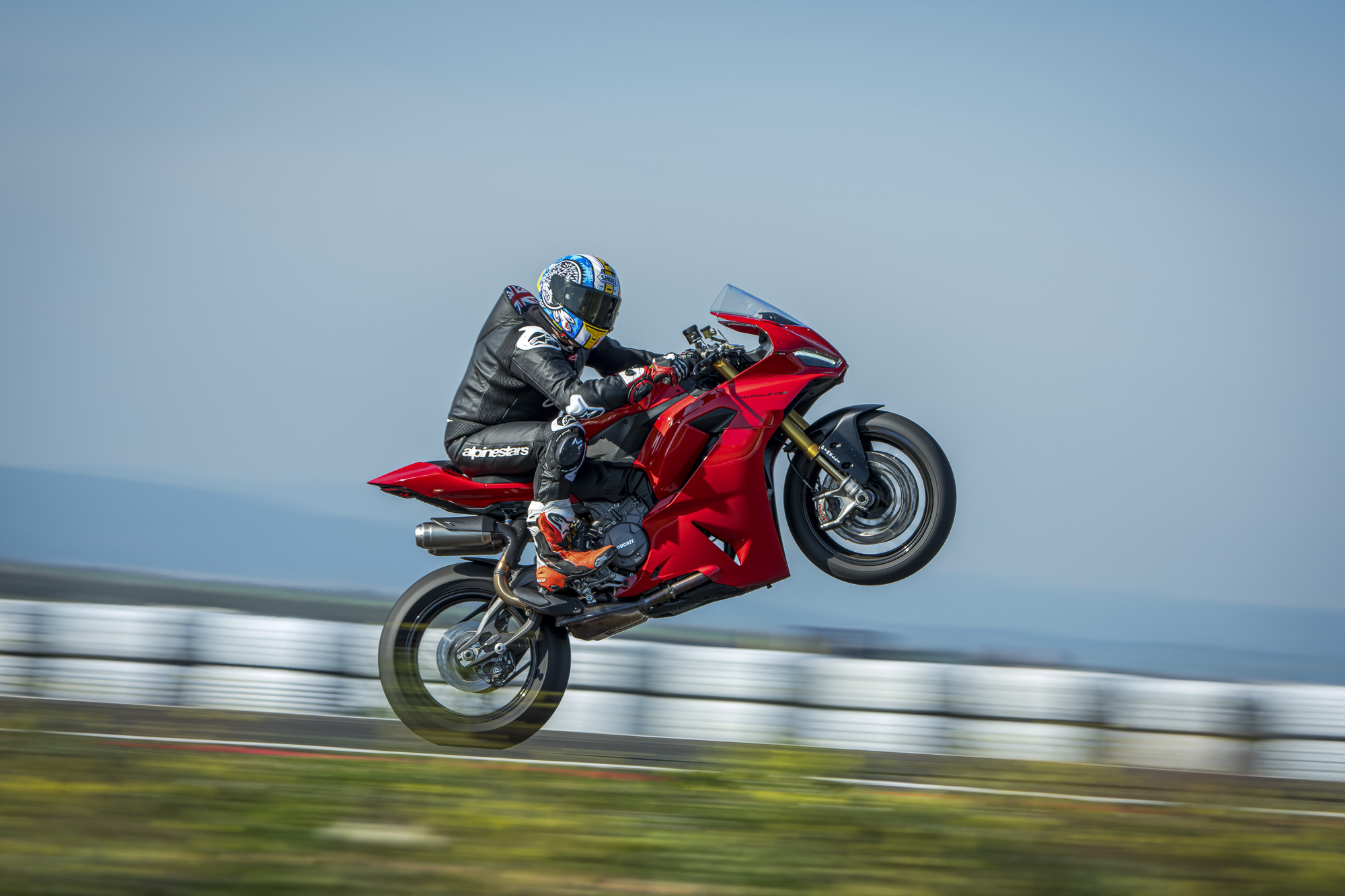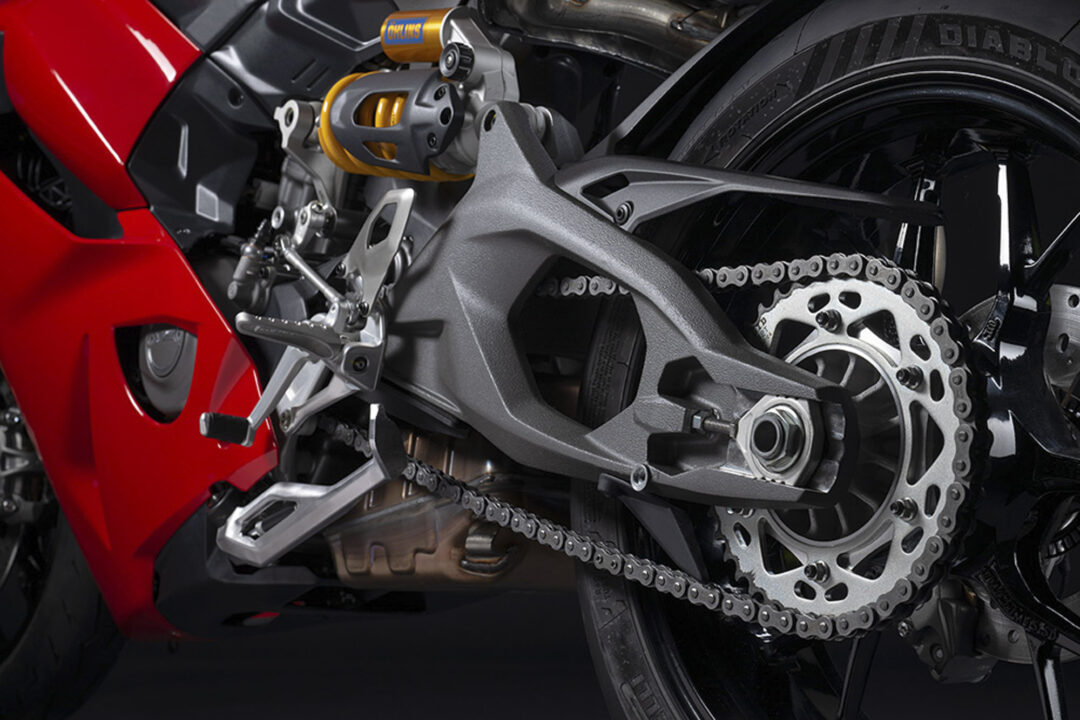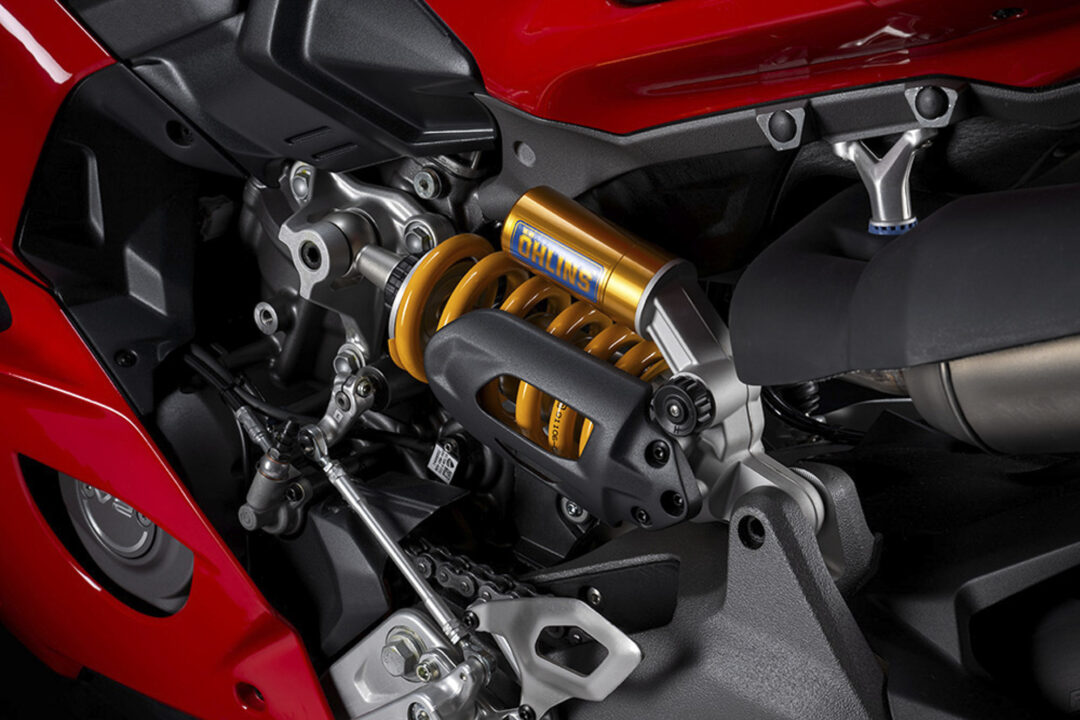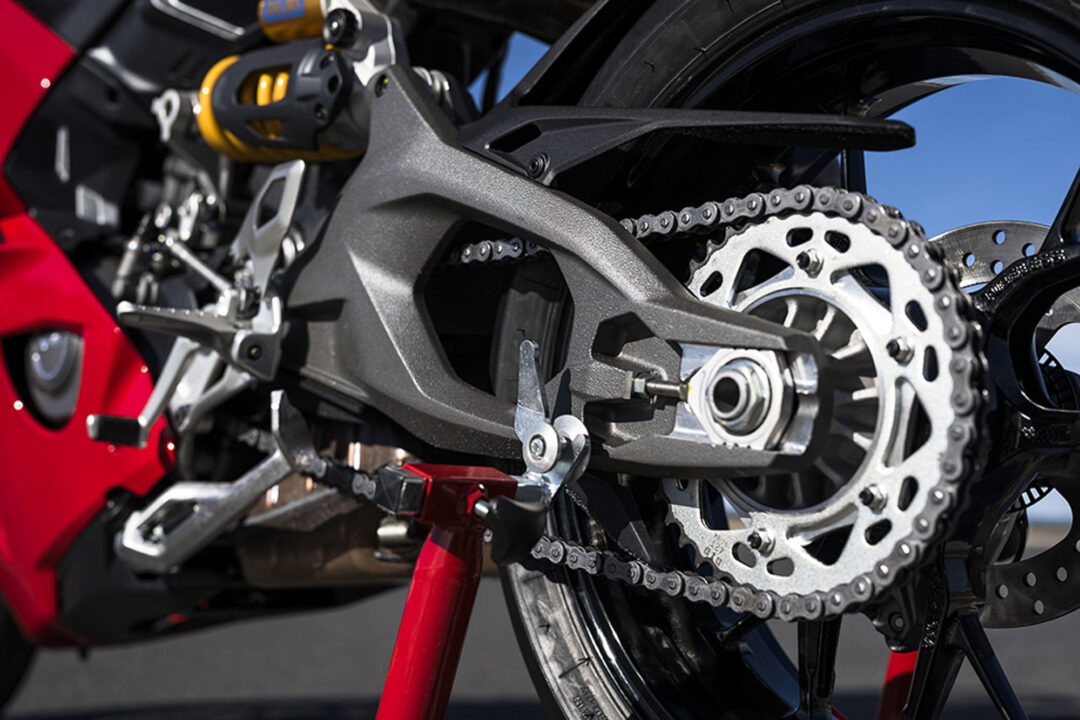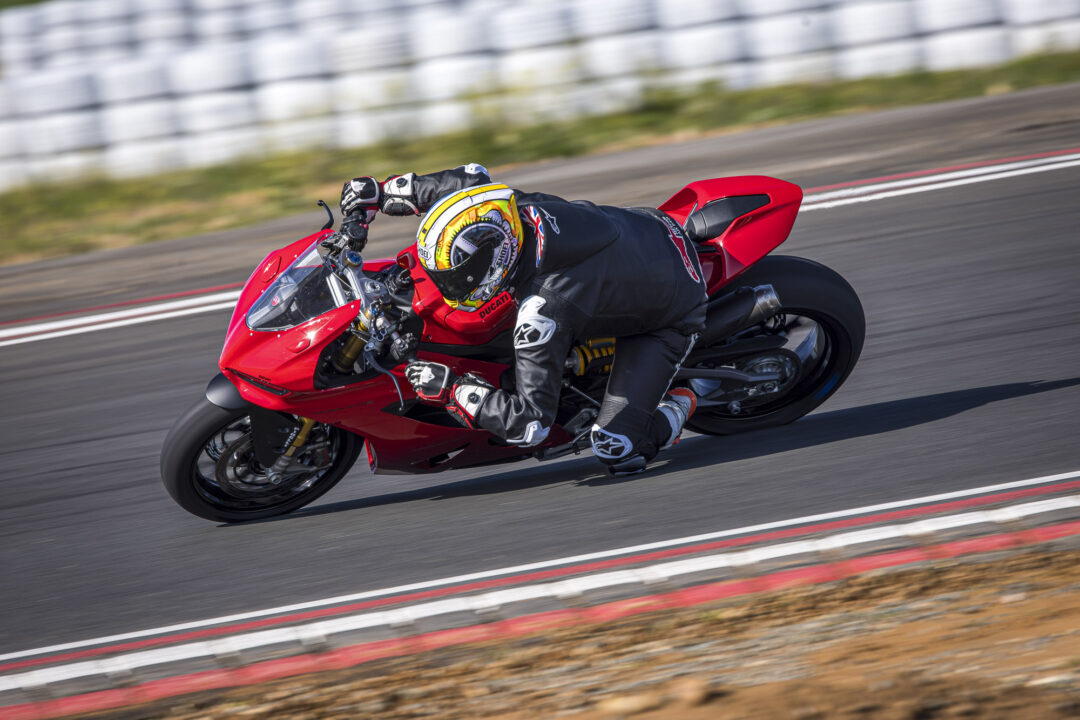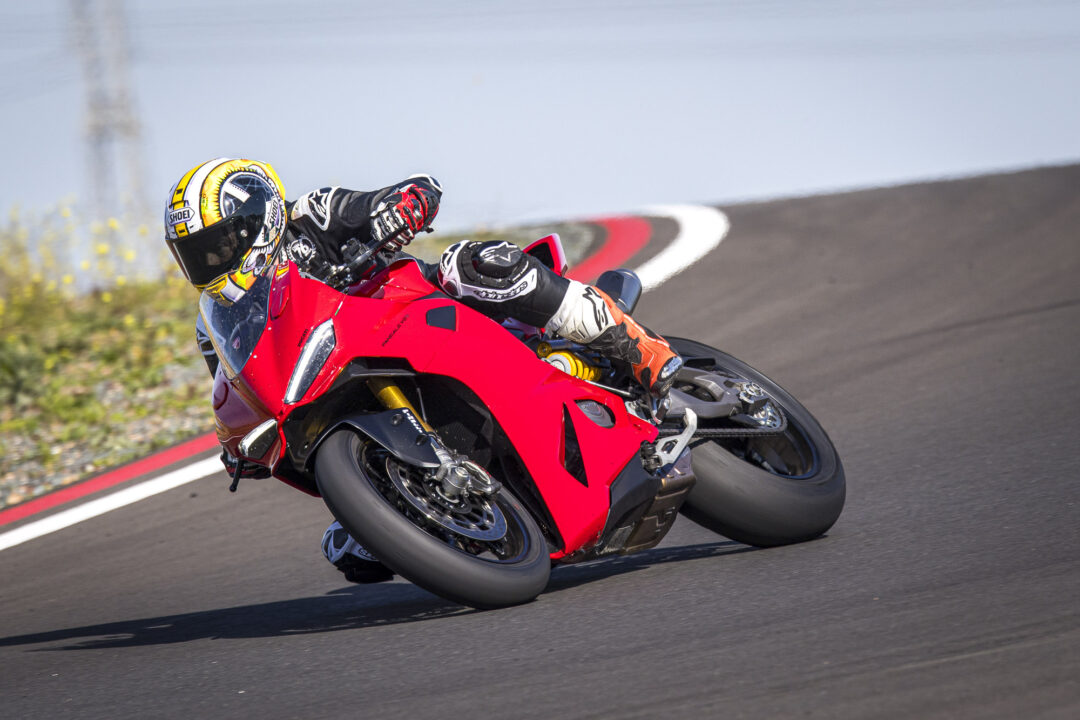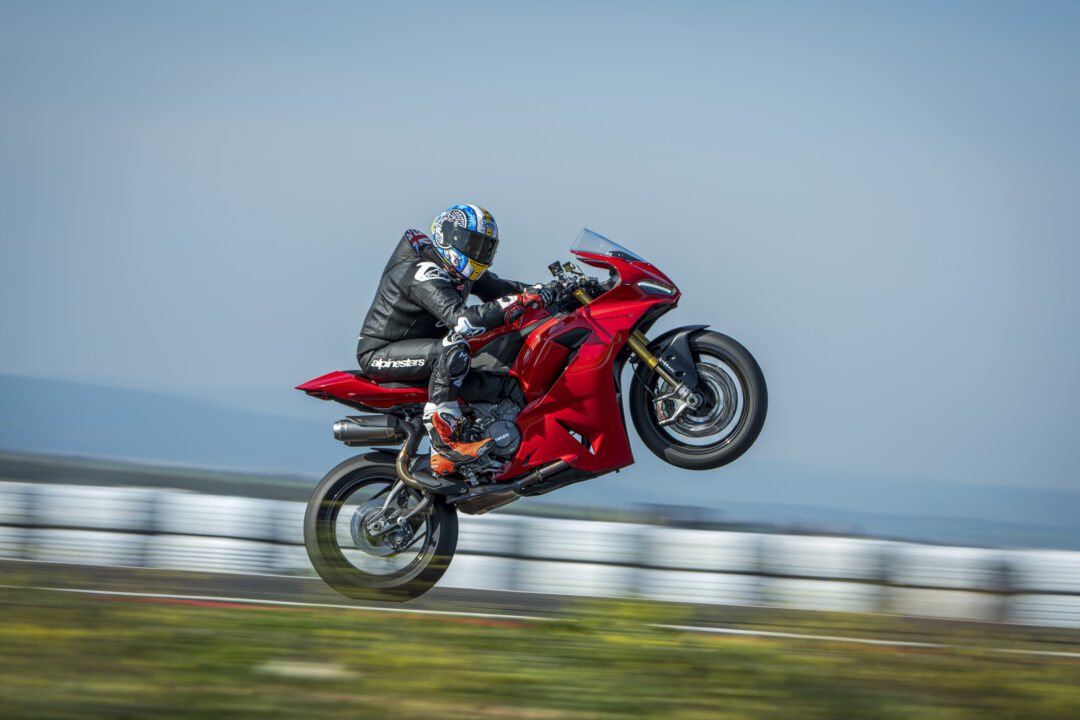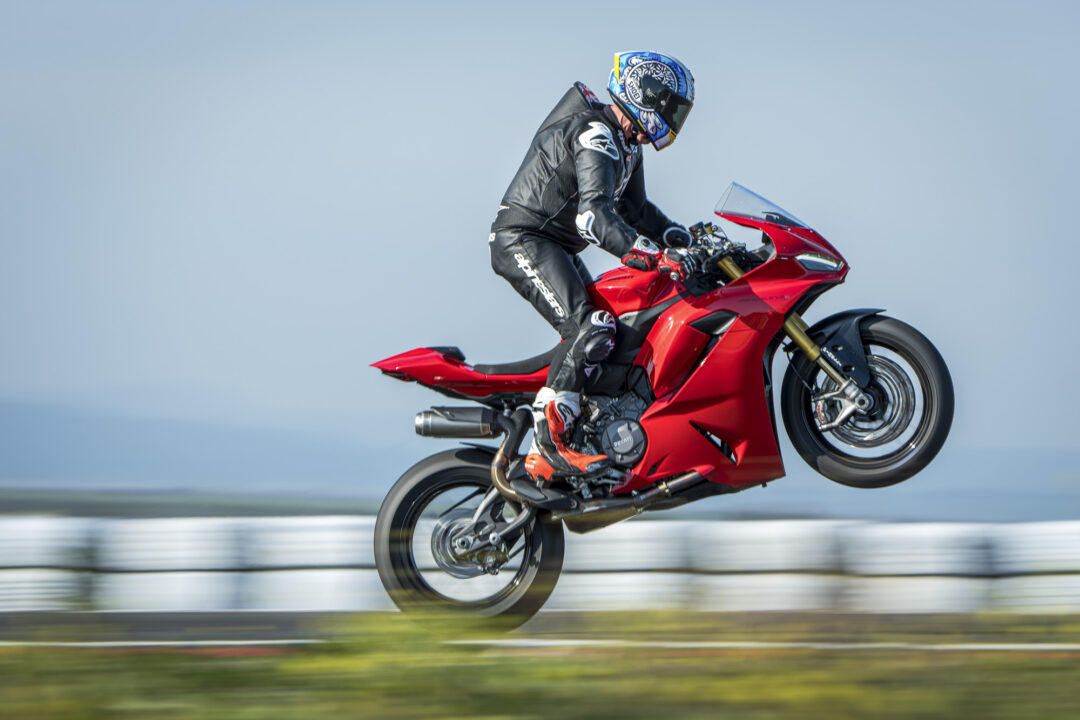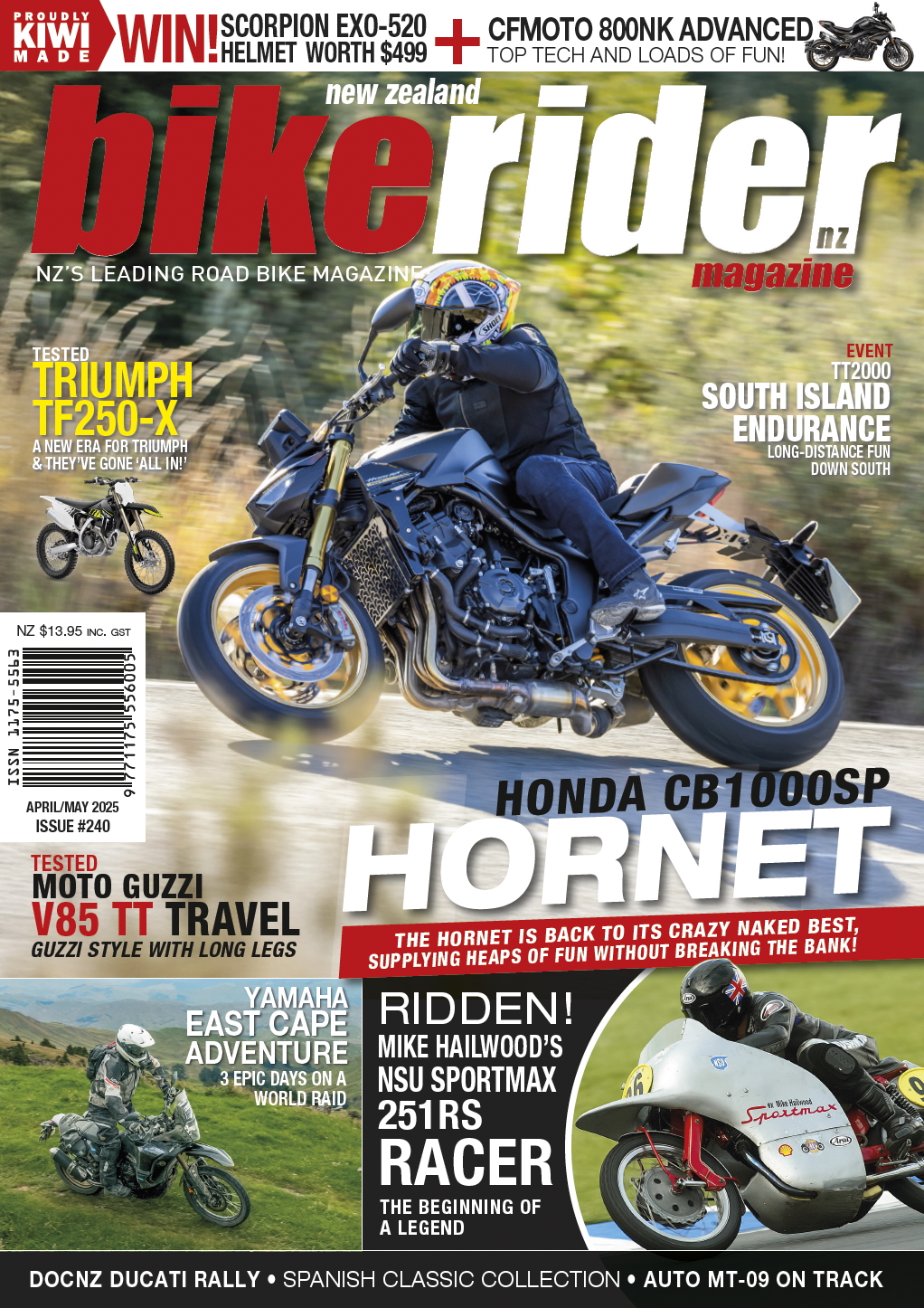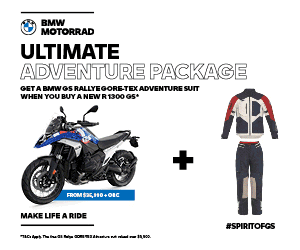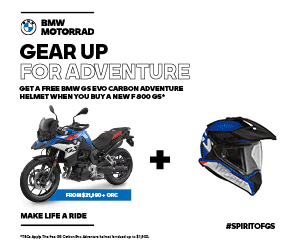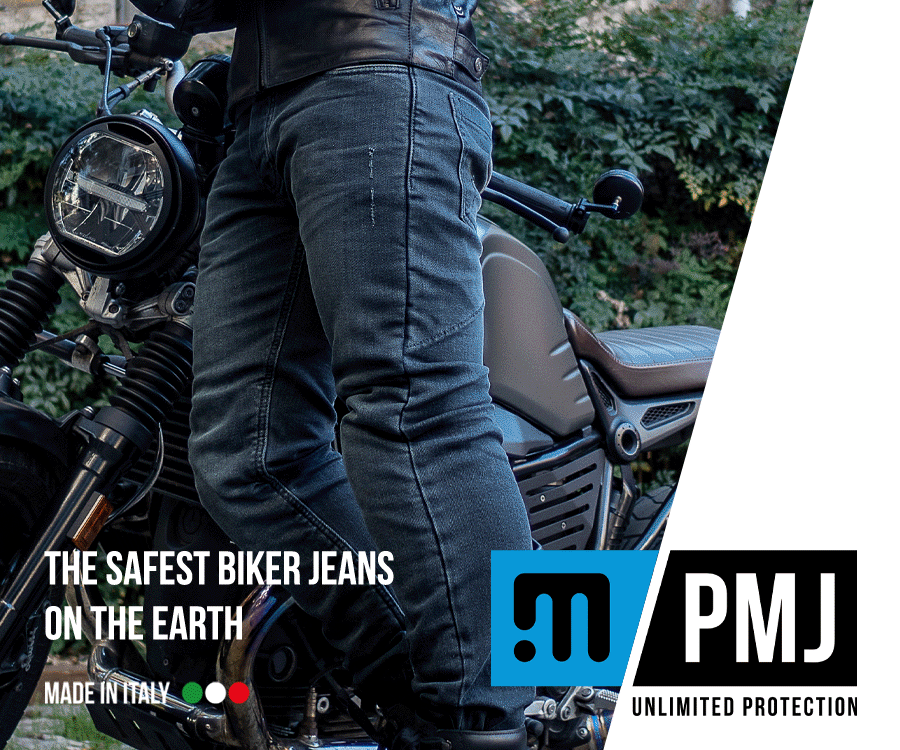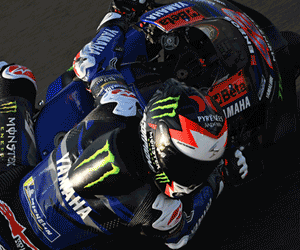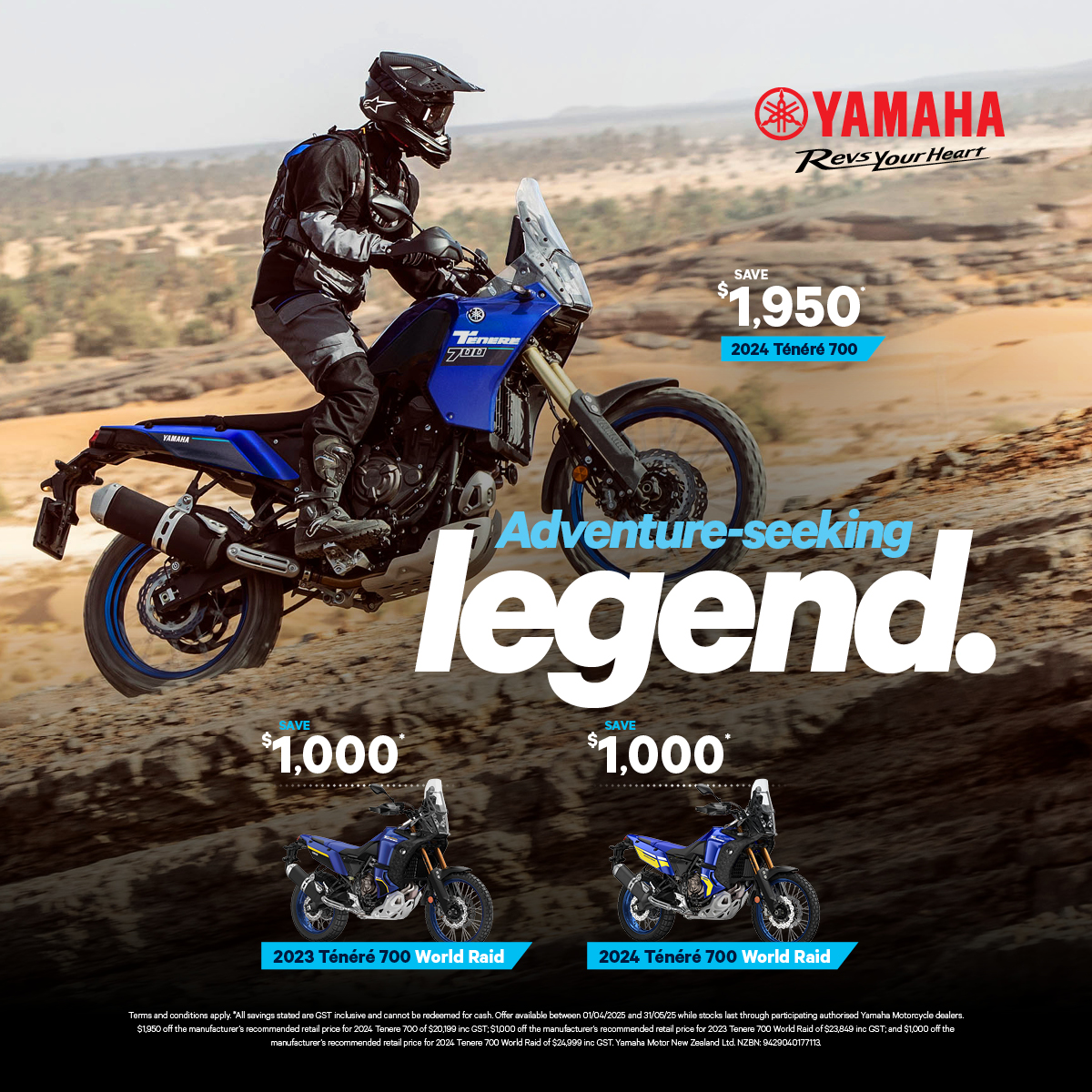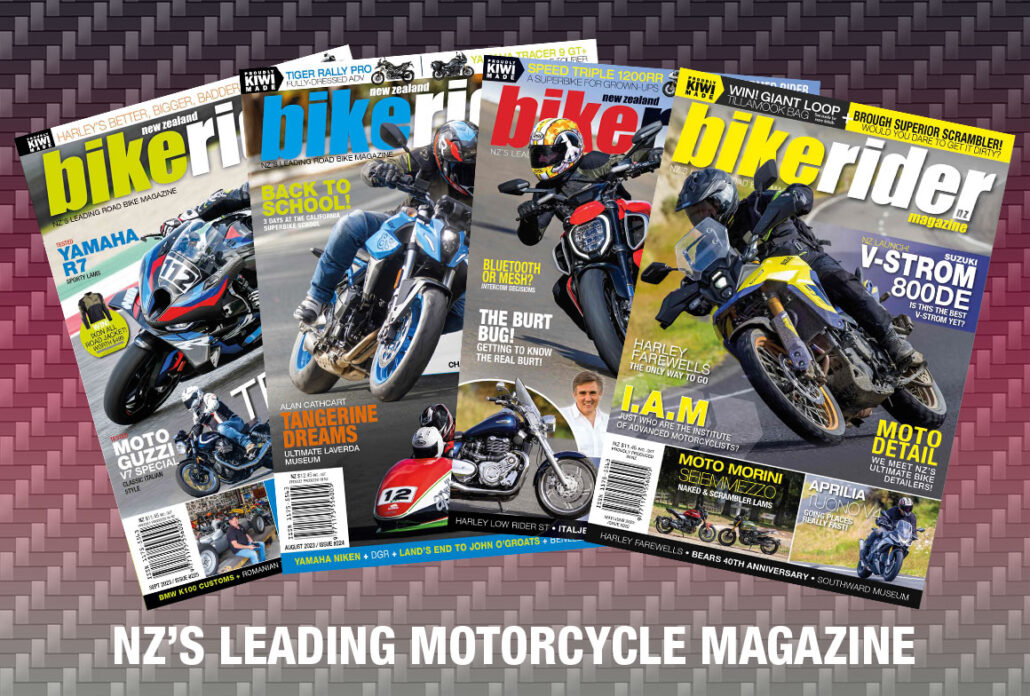- Power reduced to 120hp from previous version’s 140hp.
- Weight reduced by an incredible 17kg.
- S version gets higher-spec suspension and electronics.
Ducati goes against the tide, producing a lighter but considerably less powerful Panigale V2 for 2025. Will those horses be missed?
Words: Adam Child Pics: Alex Photo
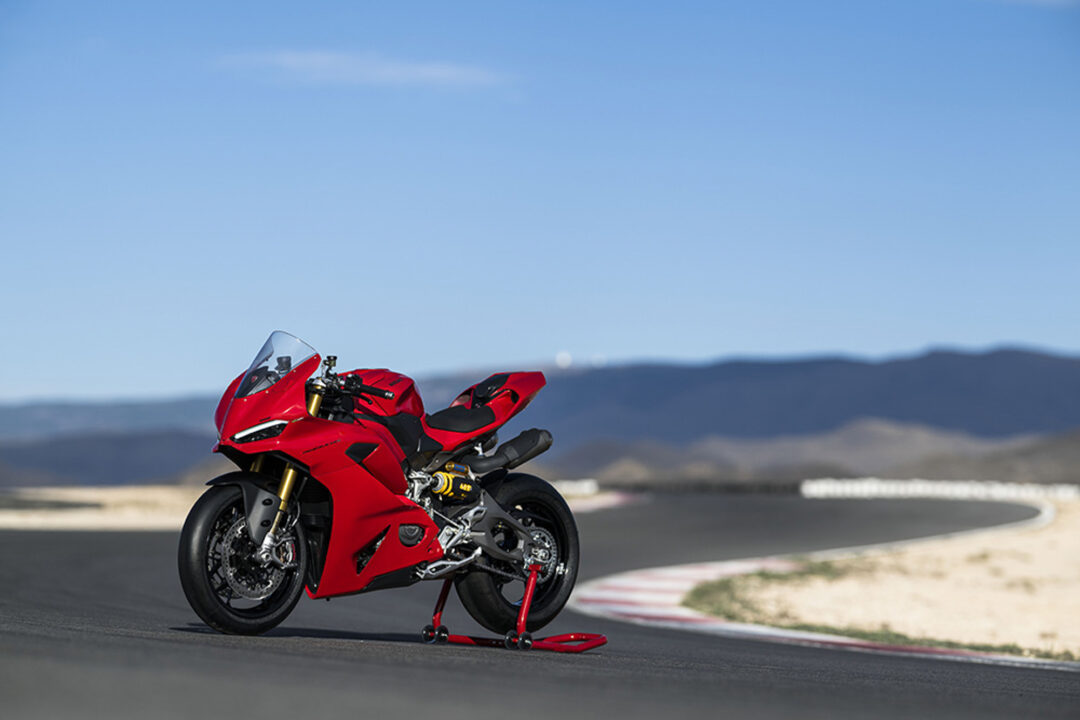
As someone who’s always been drawn to the SuperSport class, I was eager to get my hands on Ducati’s new Panigale V2. While some critics have dismissed the bike for its 120hp power output, Ducati’s success in World SuperSport with bikes that produce around 140hp, less than the 955 road bike highlight power isn’t the only factor in performance. The real game-changer here is weight. The V2 has shed a remarkable 17kg compared to the previous model, thanks to an entirely new engine and chassis. Ducati claims the new 90-degree V2 engine is their lightest twin-cylinder yet, weighing in at just 54.4kg, a full 9.5kg lighter than the old Superquadro engine.
This weight reduction makes a noticeable difference. A minimalist monocoque frame integrates the V2’s engine as a structural element, while a new, lighter cast aluminium subframe and a redesigned double-sided swingarm help achieve a claimed wet weight of 176kg for the S model and 179kg for the standard version. Even the exhaust, which has an almost classic 916 styling, meets Euro5 standards and produces a nice, throaty sound.
Both the standard and the S models offer the same power and torque, with the main difference being the suspension. The S model gets high-spec Öhlins NIX-30 front forks and an Öhlins shock, while the standard model has Marzocchi forks and a Kayaba shock. Both bikes come with Pirelli Diablo Rosso IV tyres, but for testing, I had the newer Y-shaped six-spoke wheels fitted with Pirelli Diablo Superbike slicks, and the suspension was set to the standard Race setup.
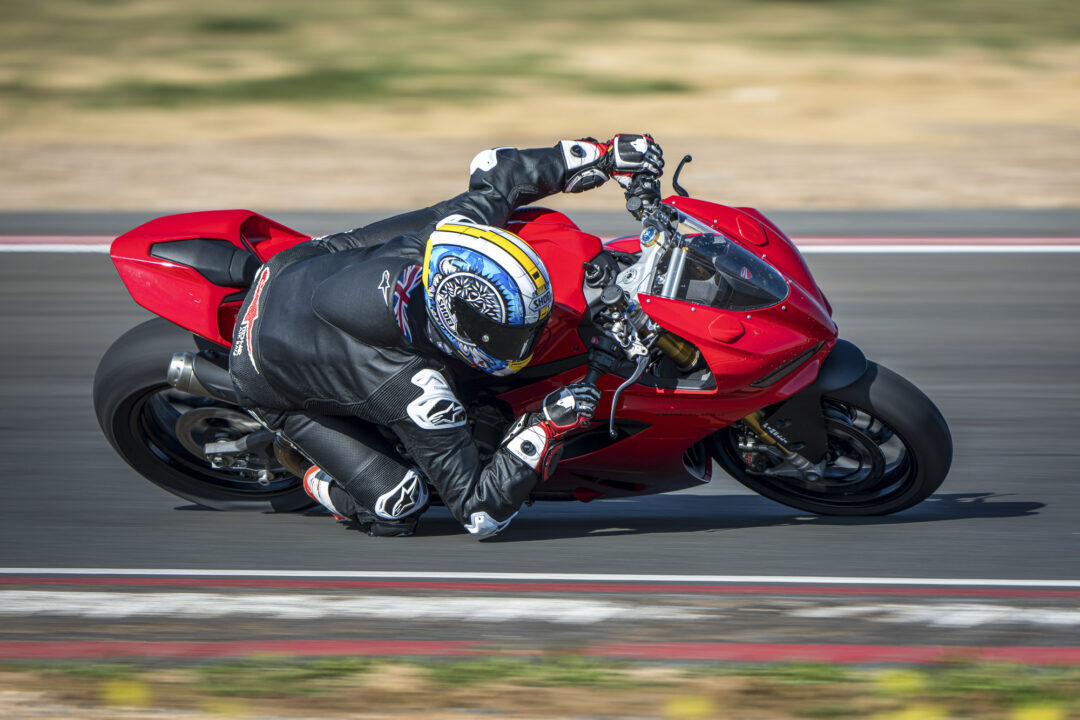
Tricky Track
The track we were testing on was brand new, just over 4km long, with a mix of flowing corners and sharp, tight sections that made it a challenge to learn. Fortunately, the V2 is designed to make even a tricky track manageable. With Ducati’s suite of rider aids—cornering ABS, Ducati Wheelie Control, Ducati Traction Control, Engine Brake Control, and Ducati’s Quick Shift 2.0—staying on track was easier than expected. These are controlled by four riding modes: Race, Sport, Road, and Wet, along with three power modes: High, Medium, and Low. For my run, I opted for the Race mode with High power, setting the traction control to level three (out of eight), wheelie control at two (out of four), engine brake control on level one, and cornering ABS at level two.
Even in Race and High power modes, the V2’s throttle response is incredibly smooth. The bike’s fuelling is near-perfect, with no jerky throttle inputs, making it very manageable even in low-speed sections. Ducati claims that 70% of torque is available from just 3,000rpm, and this was evident right from the start. It’s easy to ride at lower revs, where the V2 pulls cleanly without requiring constant gear changes, and you can focus on braking and cornering rather than worrying about staying in the “right” gear.
The new 5-inch TFT display is a big step up. It has three display modes: two road modes (Road and Road Pro) and one track mode. In track mode, the screen clearly shows rider aid intervention, gear position, and the rev counter, making it easy to monitor performance in real-time. I found it quite addicting, especially with the optional Lap Timer Pro showing live lap times and sector splits. It felt like a real-life arcade game, with lap times improving lap by lap.
The handling of the V2 is one of its strongest points. Even in tight, rapid direction changes, the V2 remains incredibly agile. From turns 11 to 16 on the track, where you need to flick the bike from one lean to another, the Panigale felt effortless, responding to every input with precision. The ergonomics are also more relaxed than the older model, with higher bars and foot pegs that make it easier to get comfortable, even for someone like me at 5ft 7in.
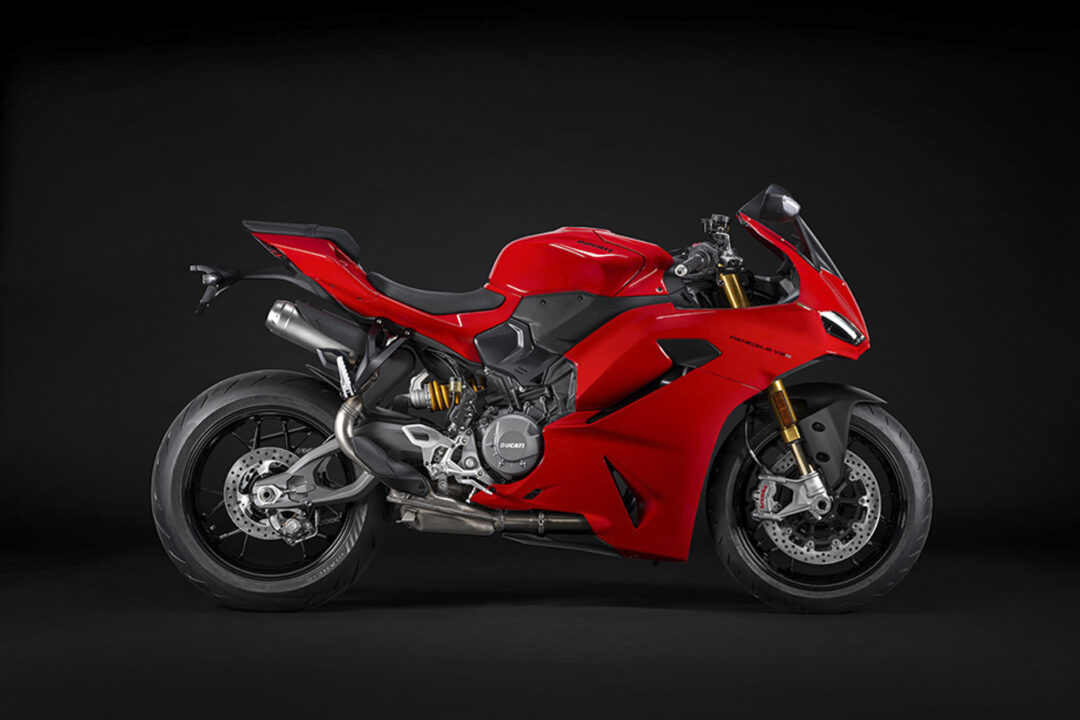
Still Fast
Top speed on the straights hit 240kph in fifth gear, and while that’s fast, it’s the bike’s balance of power and handling that stands out. The new V2 is much easier to ride than its predecessor. The lighter weight and more comfortable ergonomics allow you to concentrate on cornering and braking, making the experience less about brute force and more about finesse.
The V2’s braking is solid, thanks to Brembo M50 calipers. They stop the 176kg bike with ease, and I never felt them fade, even with heavy use. The new tank design also helps with rider support during hard braking, which reduces fatigue. The suspension setup, though working hard over the bumpy sections of track, always felt controlled and offered plenty of feedback. If you’re keen on tweaking, the suspension can be adjusted, but I found the recommended setup for a 75kg rider (I’m just under 80kg) to work well.
When the wheelie control was switched off, the V2 was more than capable of lifting the front wheel in the first two gears. By the end of the day, I was enjoying the bike more than I expected, with plenty of energy left to keep pushing. Normally, I’m relieved when the chequered flag comes out, but with the Panigale, I wanted to keep going.
While the Panigale V2 is a blast to ride, the price might be a concern for some. Yet, at $24,472 for the standard and $26,872 for the S, both variants are cheaper than the current Honda CBR600RR at $26,995, while a more direct competitor could be Yamaha’s new R9, which is $23,999. Still, if you’re after a bike that combines performance, handling, and fun, the Panigale V2 is hard to beat, and many will pay for the MotoGP-winning brand.
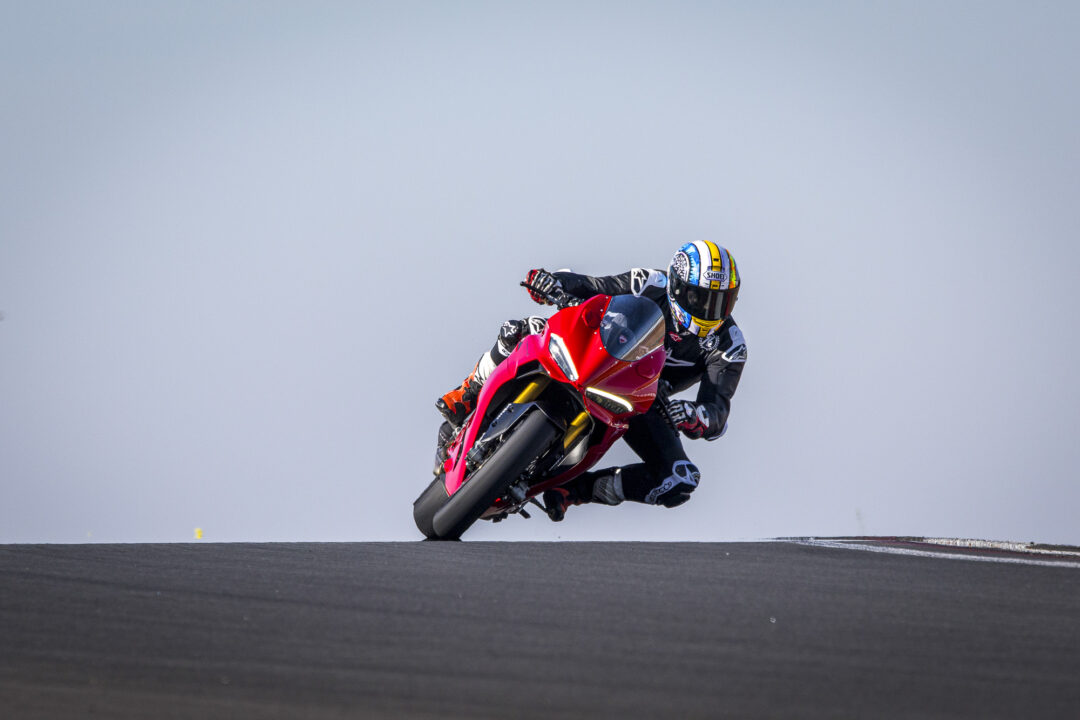
Verdict
Ducati has taken a risk with the new Panigale, reducing power in favour of lighter weight and improved handling. While it might not have the raw top-end speed of its predecessor, the V2 more than makes up for it with its fun, flickable handling and excellent rider aids. It’s a fantastic bike for track days and gives you plenty of confidence without the punishing aggression of more powerful bikes.
Specifications
Ducati Panigale V2S $26,872 ride away (V2: $24,472 ride away)
ENGINE
Capacity 890cc
Type Water-cooled, 4v per cylinder four-stroke, inline 90-Degree V2
Bore stroke 96 x 61.5mm
Compression ratio 13.1:1
Electronics Electronic fuel injection, one injector per cylinder, ride by wire
Transmission Six-speed Quick Shift up/down 2.0
Clutch Hydraulically controlled slipper, and self=servo wet multiplate
Power 88kw/ 120hp @ 10,750rpm (claimed)
Torque 93Nm/ 69 lb-ft @ 8,250 rpm (claimed)
Top speed 270kph (est)
Fuel consumption 5.3l/100km 56.5mpg (claimed)
Rider aids: Riding modes (see below), Power modes, Bosch cornering ABS, Ducati Traction Control, Ducati Wheelie Control, and Engine Brake Control.
Rider Modes Race, Sport, Road, Wet
Frame Monocoque aluminium
Rake 23.6
Trail 93mm
Wheelbase 1465mm
Suspensions Type Öhlins
Front 43mm, USD, fully adjustable,120mm travel
Rear Single rear shock, fully adjustable 150mm travel.
Wheels Cast aluminium alloy
Front 3.5 x 17
Rear 5.5 x 17
Tyres Pirelli Rosso IV
Front 120/70 X 17
Rear 190/55 x17
Brakes Bosch cornering ABS
Front 2 x 320mm discs, radially mounted Brembo M50 caliper
Rear 245mm disc, two-piston caliper
Weight 176kg. (wet, no fuel)
Seat height 837mm
Fuel capacity 15l
Servicing First: 15,000 km / 24 months. Valve check: 30,000km
Warranty 24 months, unlimited mileage
Contact www.ducati.com

